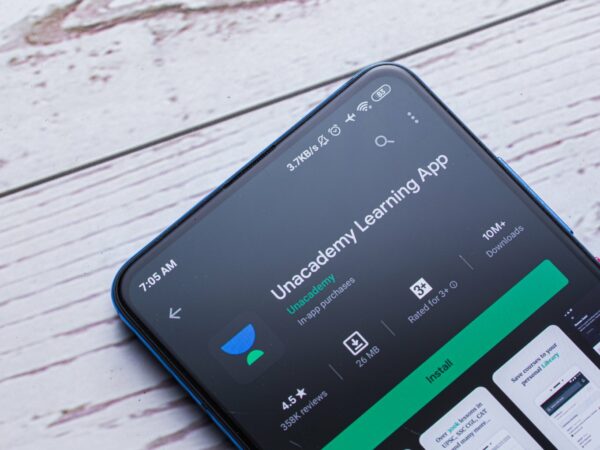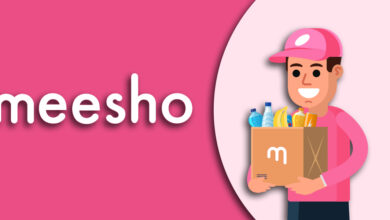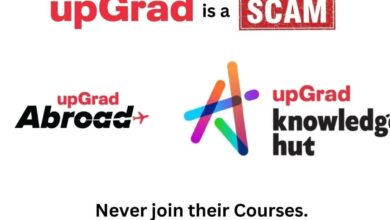Success Story of Unacademy – An Online Learning Platform

Success Story of Unacademy – An Online Learning Platform
Unacademy is an online platform that facilitates teaching and learning through its educational lectures and videos. It was initially created in 2010 using YouTube video streaming, but it wasn’t formally launched until 2015.
Since its founding, the company has had phenomenal growth, with over 10,000 educators and over 13 million users. Hemesh Singh, the CTO and co-founder of Unacademy, announced with pride that the company now has over 750,000 active premium users. As of April 28, 2022, its active subscribers have surpassed 800K, as stated by Gaurav Munjal.
According to the company’s COO Vivek Sinha’s tweet on September 9, 2021, it had previously announced reaching the milestone of 650,000 active users on its website.
It is the largest distributor of educational content thanks to its numerous platforms, including Unacademy Plus and other companies’ products like Chamomile Tea with Toppers, Wifistudy, The Solutions, Unacademy JEE, and Unacademy Studios, with which it receives close to 110 Million views each month. Since the learning software works with Android, iOS, and Windows, anyone may readily access it.
Unacademy products include:
- Learner App
- Educator App
- Parent App
The company offers live and recorded classes from India’s best educators via:
- Structured Syllabus
- Daily Live Classes
- Doubt-clearing sessions
- Tests and Practice Opportunities
Industry
While the market for skill development was assessed to be worth less than $500 million, the market for kindergarten through 12th grade was valued at $1.16 billion. In India, the edtech market will be worth $2.8 billion overall in 2020. By 2025, when the market for educational technology is predicted to be worth $10.4 billion, this is, however, expected to change significantly.

Founders and Team
Gaurav Munjal, Dr Roman Saini, and Hemesh Singh launched Unacademy. Although Gaurav Munjal and Dheeraj Meena launched a YouTube instructional channel with the same name in 2010, the business was legally registered as Unacademy as an education corporation in Bengaluru in 2015.
Shareholding
The two companies with the greatest stakes in Unacademy are Nexus Venture Partners and Sequoia India, each owning 13.1% of the company’s stock. The ESOP pool represents about 14.4% of the outstanding shares of Unacademy. The company’s other stockholders include Softbank, General Atlantic, and others. The three co-founders of Unacademy, Gaurav Munjal, Roman Saini, and Hemesh Singh, collectively own more than 9% of the company.

Growth and Revenue
Unacademy, which has successfully secured a sizeable number through investment rounds and purchased roughly 12 businesses, including CodeChef, Coursavy, and others, has grown to become one of the largest companies in the Edtech sector in 2021. Currently, the business is regarded as the second most valuable ed-tech startup.
According to Unacademy, students who pass the most difficult exams will have the highest success. The organisation, which currently offers 32 or more competitive exams, is concentrating on expanding its subscriber base by adding new tests and exams.
A post-money valuation of $510 million was given to this Edtech startup after it raised $110 million from General Atlantic and Facebook. This was a significant boost for the business, which had already attracted notable investors like Sequoia Capital India and Steadview Capital at the beginning of its existence. The company has received funding from Temasek Holdings, Tiger Global Management, Dragoneer Investment Group, SoftBank Vision Fund, and Dragoneer Investment Group in the past few years.
According to reports, MS Dhoni, the former captain of the Indian cricket team, has signed a two-year contract with the company. The company’s advertising efforts were launched with a great video shoot starring Dhoni, which is still in post-production and will be released soon.
Expenses Breakdown
Employee benefits accounted for the largest (37%) of Unacademy costs. These costs increased by more than 6X in FY21, going from Rs 120 cr to Rs 748.5 cr in the same fiscal year. The crucial thing to remember is that 83 per cent of the share-based payments, or Rs 392 crore, would be paid in cash over the following years out of the overall expenses, which came to about Rs 474.4 crore.
From FY20 to FY21, the EBITDA margin slightly rose while the losses more than doubled.
Funding and Investors
After the most recent fundraising round, Series H, spearheaded by Temasek, Softbank, Tiger Global, and others on August 1, 2021, when the firm raised $440 million, Unacademy is now valued at $3.44 billion.
In May 2016, Blume Ventures provided $500K in early funding to Unacademy. On August 1, 2021, the most recent funding was received.
The company has raised $838.5 Million in total capital over 12 funding rounds.
Unacademy received some illustrious funding from major players in the business and investment sectors, such as General Atlantic, Facebook, Sequoia Capital, Flipkart, Softbank, Nexus, Blume, Tiger Global, Dragoneer, Temasek, and others. One such round occurred in February 2020, when companies like General Atlantic, Facebook, Flipkart, and others contributed close to $110 million. Facebook’s contribution was unreported, but it is estimated that it contributed $20 million or more to the round. Both Unacademy and Facebook received some incredible answers to the same round
Acquisitions
Facebook-based Unacademy has purchased 12 businesses to improve its position in the edtech industry. Swiflearn was the final acquisition, and Unacademy purchased it on November 3, 2021. Before being acquired by Graphy on October 11, 2021, the company had previously purchased the Edtech SaaS platform Spayee, which Unacademy financed.
Since October 18, 2021, the company has been negotiating to purchase Swiflearn, a Gurugram-based full-stack online platform for academic courses that seeks to give students a tailored learning experience. Swiflearn, which Abhinav Agarwal and Anand Bakode founded, caters to students in the K–10 age range and offers both free and paid courses. At the time, the acquisition agreement was nearing completion and was anticipated to be worth $15–20 million.
Lastly, the acquisition took place on November 3 and is consistent with the business’s plans to strengthen its presence in the K–12 market. The deal’s financial details, however, remain secret. One of the company’s key acquisitions was CodeChef, to the satisfaction of both Gaurav Munjal and Bhavin Turakhia.

Business and Revenue Model
Unacademy uses both B2B and B2C business models, and their paid memberships are where they make the most of their money.
The fundamental business model of Unacademy is a freemium one. Here, a variety of services are provided by the business without charge to the audience. However, they must pay a nominal cost for more high-quality content if they want it.
Unacademy Plus: The company provides a variety of classes as well as free, in-depth, pre-recorded video lectures for all students. However, the organisation also provides paid live lessons to assist students in resolving their questions through individualised question clearing sessions and appropriate lectures. This is accessible through “Unacademy Plus,” a paid subscription service.
To commemorate the Unacademy Learning Festival, the Unacademy Plus subscription was introduced at a price of Rs 299. For the Joint Entrance Examination (JEE), the National Eligibility Cumulative Entrance Test for Undergraduates (NEET-UG), and students in classes 8 through 12, this offer was available from April 23 through April 30, 2022.
Relevel: In May 2021, Unacademy introduced a new platform named Relevel. Within 15 days of submitting an application, this new platform is intended to assist job searchers in finding employment. As of October 1, 2021, Relevel has more than 2.35 lakh users and boasts a 100% placement rate. Most individuals with jobs come from the nation’s Tier II and Tier III cities. Additionally, the seasoned job seekers reported that Unacademy’s job platform helped them secure compensation increases of up to 150 per cent.
On Relevel’s platform, 64+ businesses from various industries have conducted interviews with candidates based on the tests to date. Currently, Relevel offers 3 tests to job seekers: frontend development, backend development, and business development.
These three tests are given in a single day and range in kind from multiple-choice questions (MCQs) to algorithmic tests and case studies. The creation of a mini-app as part of the Relevel tests is occasionally followed by a final round of interviews with business leaders. Relevel is now led by the platform’s founder, Shashank Murali. On October 1, 2021, the platform raised $20 million from Unacademy.
Graphy: The Unacademy Group is proud of Graphy, a tool created to assist local creators in expanding their audiences. They can also hold live cohort-based classes, sell their abilities, and do other things thanks to it. Influencers, educators, and subject matter experts from all around the nation are welcome on the brand-new Graphy, which serves as a SaaS platform.
Unacademy’s Graphy announced its Graphy Creator Grant on June 22, 2021. The grant is intended to assist candidates in starting their online school.
Youtube channels: Everyone knows that the company originally began as a Youtube channel. Even though the company has expanded greatly since 2010, it still maintains its Youtube account. The main difference is that the business now manages multiple Youtube channels under names like Unacademy JEE, Unacademy UPSC, and others for children in grades 6 through 8 instead of just one.
Content marketing: Unacademy excels at marketing both its brand and its contents. It markets its contents utilising a variety of innovative strategies. Additionally, it employs lead generation strategies like social media marketing, email marketing, adverts on its website and other websites, and more.
In-app purchases: Unacademy makes a sizable profit from in-app purchases as well. The business often posts deals and promotions on its app for live lessons, study guides, real-time practice exams, quizzes, and other premium content.
With around 100,000 customers, “Unacademy Plus” provides for-profit educational services. The primary source of income for Unacademy comes from these paid subscriptions.
Learning Tools: Unacademy provides students with access to various learning resources to aid in their academic endeavours. They usually fall into two categories:
• Pre-recorded videos
• LIVE sessions
While most of the recorded recordings can be viewed for free, the Live sessions need payment.
On September 2, 2021, about a year after buying the company, Unacademy decided to shut down Mastree, an online tool for teaching communication to children. Out of the 240 people at the company, 190 will be employed by Unacademy or about 80% of the Mastree staff.
Unacademy Store: Unacademy plans to open “Unacademy Stores,” which will serve as offline experience centres to expand beyond exam preparation and establish a physical presence. The firm will launch in the Delhi NCR region with its Unacademy Stores. Various devices running Unacademy’s material are exhibited in the experience zone of the Unacademy Store.
Challenges
Since its start as an ed-tech startup in India, Unacademy has encountered many difficulties. Its biggest problem is its fierce competition from other successful Indian edtech businesses.

Unacademy Layoffs
The reports from April 7, 2022, claim that the large ed-tech company has recently let go about 1K of its employees. On-roll personnel and contract instructors are among the Unacademy staff members who have been asked to resign. According to the sources, 600 of these individuals were given the option to quit during the final week of March 2022.
According to reports, the imminent slowdown in venture capital investment, the unsteady state of the economy, and the desire to reduce the company’s overall cash burn all contributed to the significant downsizing plan. The Indian ed-tech business has seen a lot of layoffs as offline classes suddenly take up once the Covid-19 progressively fades away.
Additionally, Vedantu let go of more than 600 employees in the month of May 2022. Companies like Cars24 have also had a fair amount of layoffs; on May 19, 2022, the used auto e-commerce unicorn fired 600 staff members.
According to reports from June 17, 2022, Unacademy has once more laid-off workers after asking 150 to leave over the previous two days. The laid-off workers are mainly from Unacademy Group’s core businesses, Unacademy and PrepLadder, working in the sales and operations verticals. The edtech unicorn cited poor performance as justification for terminating these employees. The corporation has stated that increasing efficiency is its only strategy for turning a profit.
This group of layoffs appears to have different motivations than the 600 employees who were terminated earlier. Those 600 employees were primarily let go because they did not pass the tests used to identify role redundancy and performance. According to reports, the business is trying to help the fired workers find new jobs. The severance package also provided a two-month income and supplemental medical insurance/coverage through the middle of July.
Competitors
- Khan Academy
- Toppr
- Byju’s
- Vedantu
- Bluprint Firefly
- TutorVista
Given that Khan Academy offers high-quality educational information for free, much as Unacademy, and that many students benefit from it, it appears to be the strongest rival. The company asserts its exclusivity in the educational services it offers, despite facing other rivals around the country.

Future Plans
The total market size for this EdTech startup is anticipated to increase from $160 billion in 2017 to $287 billion by 2023. With the largest distribution of free educational videos and more than 100 million monthly views, the company is working to produce videos in a variety of languages to help students around the world. These videos will also contain valuable content and test preparation modules for all potential competitive examinations, and they will partner with brilliant individuals to create a strong student network.
Edited by Prakriti Arora





